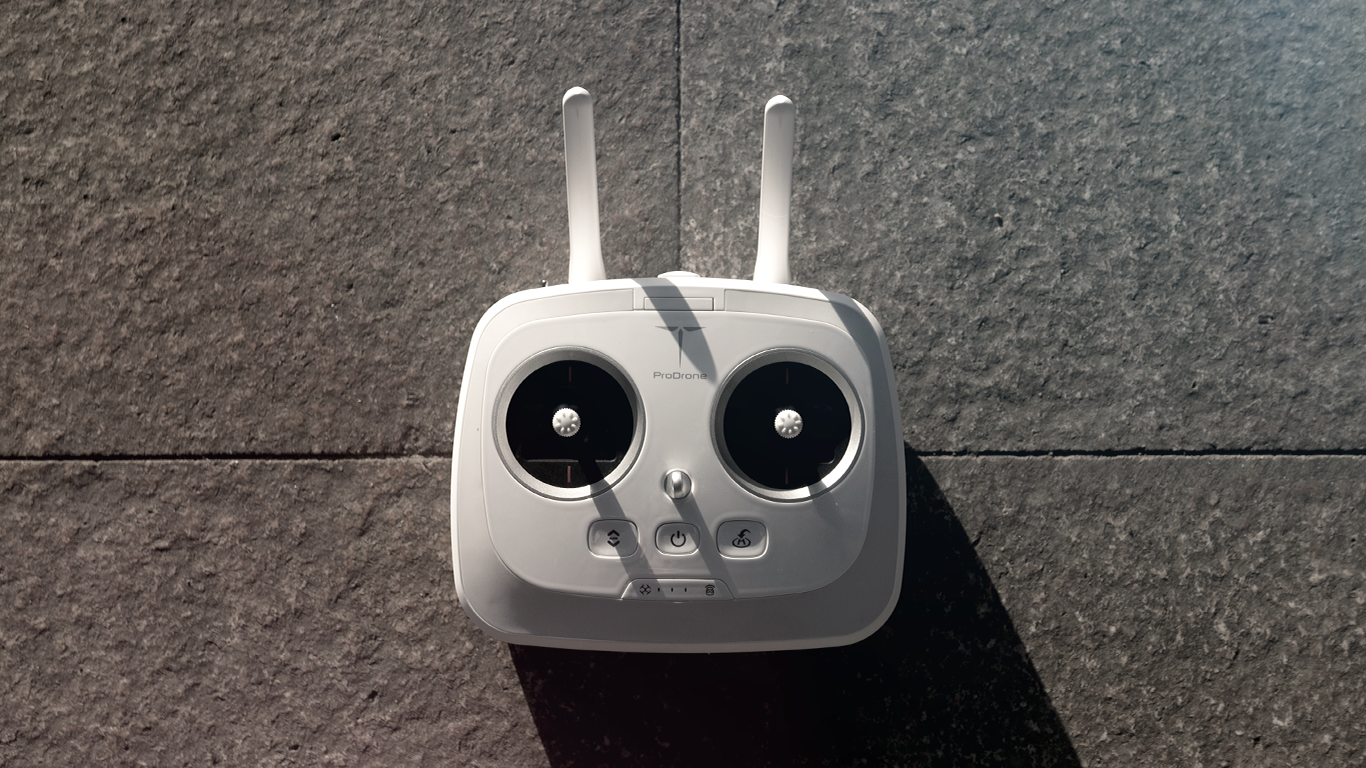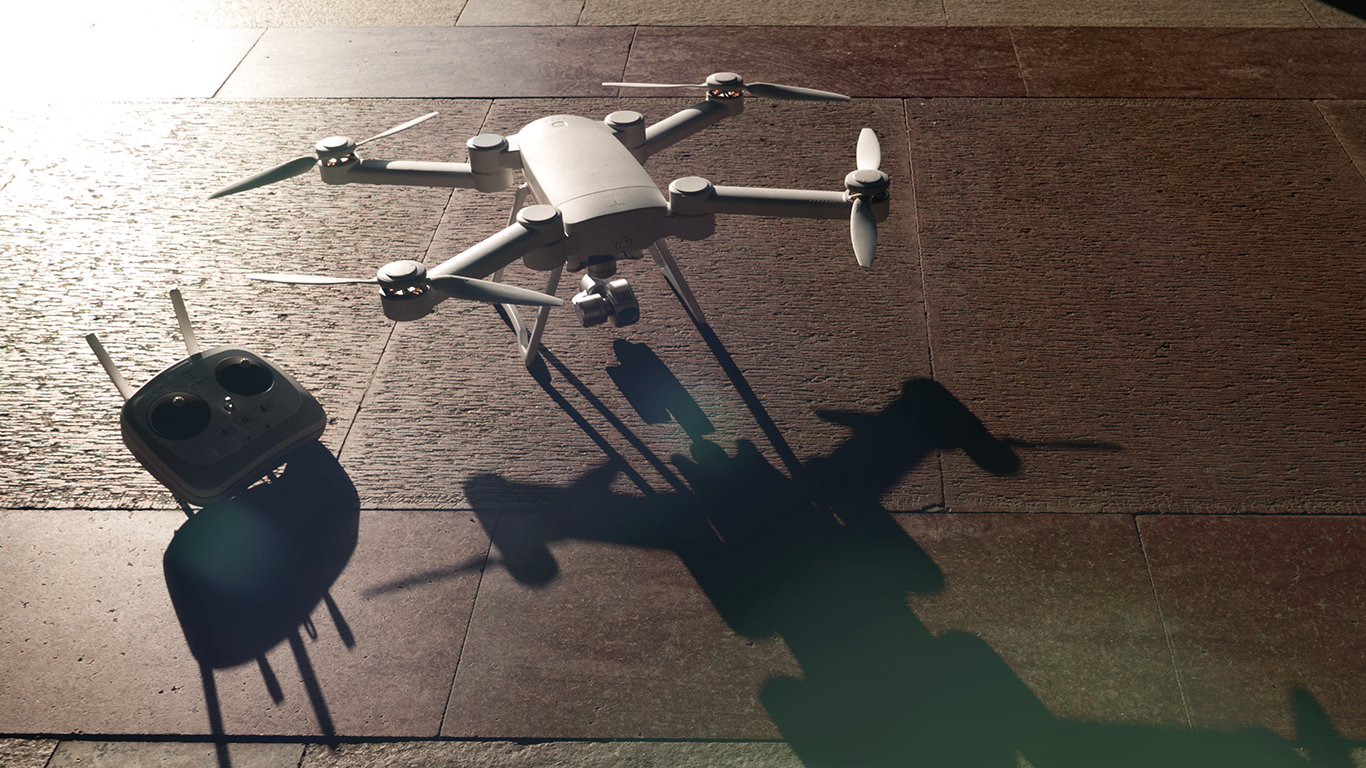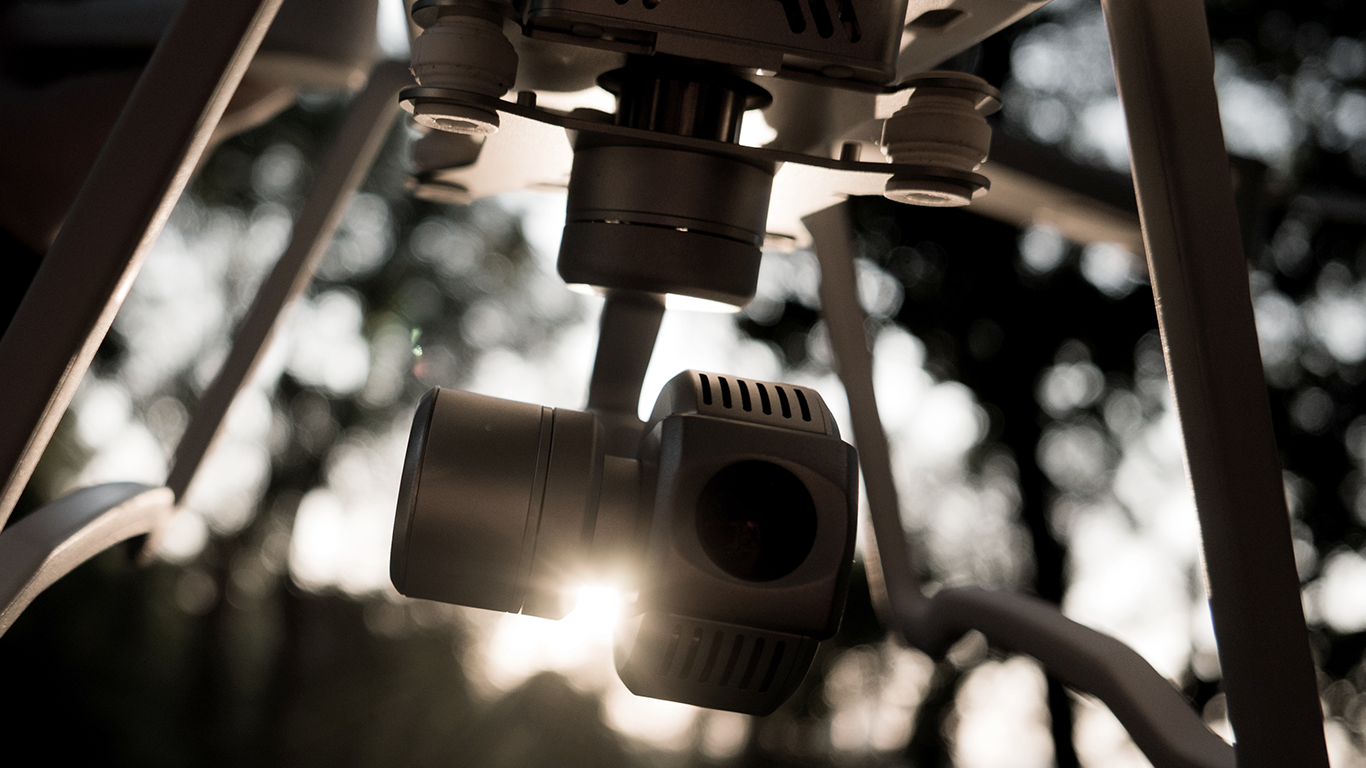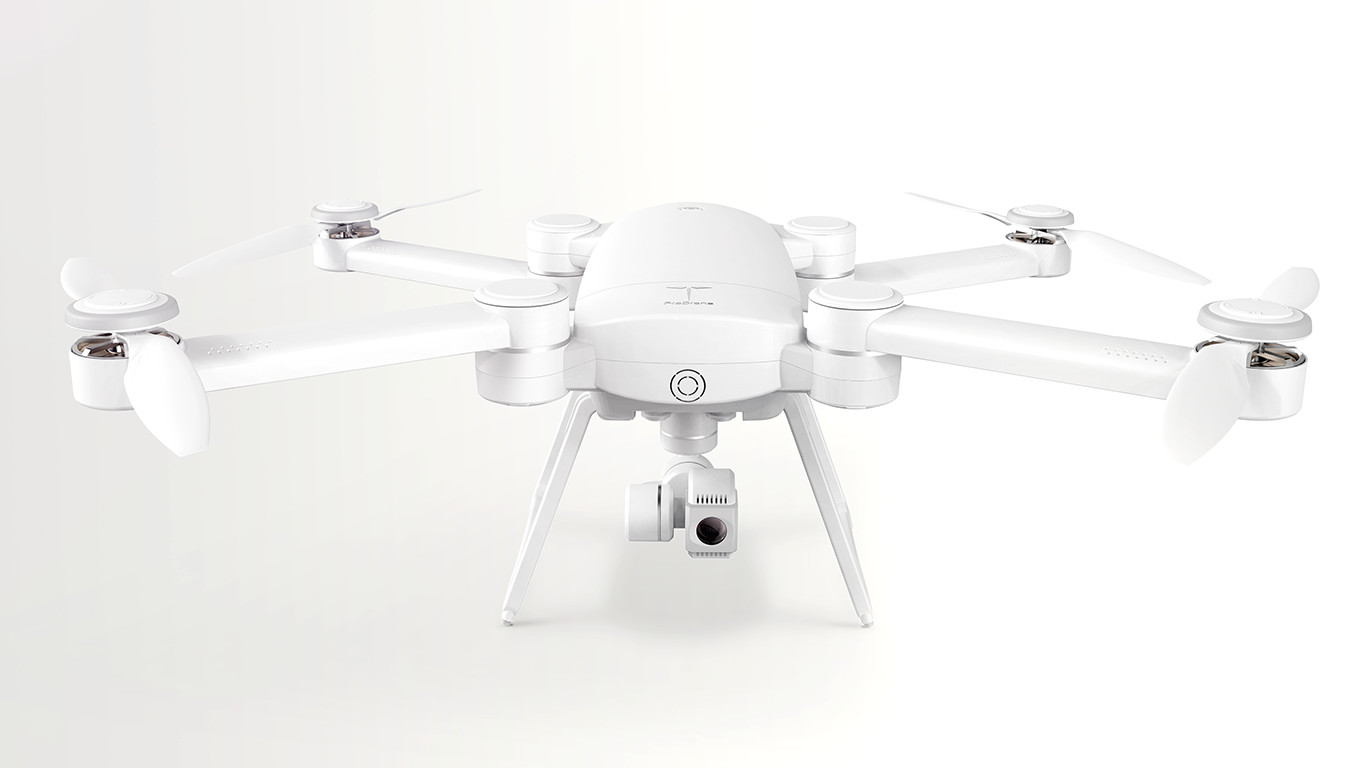The public’s taste in drones is growing more sophisticated. The industry is improving so quickly that major new features are released every year, if not every few months.
If a company wants to sell to the increasingly savvy entry-level quadcopter space, it needs to build a drone that can do more than simply fly. In an attempt to stand out, the new BYRD quadcopter built by ProDrone relies on an unusual gimmick: foldability. The quadcopter’s arms and legs tuck up to its body, dramatically reducing its size and making it possible to drop it into a backpack.
The Standard version of the drone has a 25-minute flight time, passable 1080p camera and $750 price tag that put it in line with popular entry-level hobby drones like the DJI Phantom 3 Standard. The upgraded Advanced and Premium models of the BYRD tack on advanced features like a 4K camera and a “follow-me” mode where the drones autonomously follow their user.
As I flew the drone over the course of several weeks in San Francisco, it quickly earned my trust. It became clear this is more than a foldable gimmick. This is a reasonably priced drone that covers all the basics with ease.
Basics
- Folds down to 273 × 223 × 107 mm
- Weighs 1,890 grams
- 25-minute flight time
- 1080p, 16 megapixel camera included
- 2.4G Wi-Fi HD video downlink
- Transmits up to .62 miles
Setup
I don’t own a car, so flying a drone in the Bay Area inevitably involves a trip on public transit. You haven’t made enemies until you ride a bus at rush hour with an enormous hardshell rollercase wedged between your knees and the person next to you.
So when I can, I like to carry drones in my backpack, which can be hard on them. I’ve snapped propellers and once cracked a panel on a particularly flimsy quadcopter. But it fits with the hobbyist industry’s growing connection to exploration and extreme sports. If I’m going to hike to that secluded beach and film myself surfing, the drone better be as portable as possible.
ProDrone is one of the first companies to recognize this in a meaningful way. The BYRD’s arms and propellers fold in tight to its body, reducing its length from 24.5 inches to 10.7 inches. Its folded width is just 8.8 inches. In short, it folds down from an extra-large drone to something a bit smaller than an XBox. Its camera and gimbal must be detached and stored in a separate case. The drone, camera and controller all fit into my top-loading backpack with some room to spare.
Once you get to your flying spot, it’s time to assemble everything. You unfold each arm and propeller into position, which is enough to lock them into place. The BYRD’s two legs also fold out. A branded LiPo battery slips into the top of the drone.
If I’m going to hike to that secluded beach and film myself surfing, the drone better be as portable as possible.
The trickiest part to assemble is the camera and attached gimbal, which plug into the belly of the BYRD. A clear plastic case that covers the camera’s lens is surprisingly difficult to remove and reattach. This part generally took me longer to complete than the rest of the drone’s setup combined. But during several weeks of use, I managed to reduce my setup and put-away times to less than two minutes.
Once you connect the drone to its controller, it’s time for the drone dance: Hold up the drone and turn in a circle. This part is a bit embarrassing when you have an audience in a public park. If the BYRD successfully calibrates its compass, then its lights will turn green. I was able to get a GPS lock all but a few times. Restarting the drone was enough to fix the issue.

The BYRD’s controller features shortcut buttons that let you command the drone to autonomously land or take off.
The app and controller
The next step is to connect the drone via Wi-Fi to the ProDrone ProFlight app, which can be downloaded to Android and iOS devices. ProDrone recommends using a tablet, so I brought along a Nexus 9. The BYRD has a nifty device holder that attaches to the top of its controller and adjusts to hold any screen size.
The app’s main flight screen allows you to do just about everything except steer the quadcopter. There are buttons to command the drone to take off or land itself, or you can input an autonomous flight path. Most of the screen is taken up by a live stream of the camera’s view. As a result, the most important buttons to note are the photograph and video icons. Photos and videos stored on the drone’s micro SD card can be viewed from another page in the ProFlight app.
Overall, I liked the placement of buttons within the app. I found myself using the autonomous return-to-home button almost every time. Takeoff has always been one of the most exciting parts of drone flight, so I left that to myself.
If you’ve ever flown a drone with a first-person-view headset, you know how natural this can feel compared to piloting the drone from your view on the ground.
With the exception of my very first flight, the camera live stream was just that — a live stream. Generally I fly quadcopters with a GoPro, the app for which has a noticeable lag. It acts as more of a preview; use it to set your shot, but don’t rely on it for an accurate view in the moment. With the ProFlight app, I found myself making regular corrections to my flight trajectory.
If you’ve ever flown a drone with a first-person-view headset, you know how natural this can feel compared to piloting the drone from your view on the ground. You can also access the stream across several devices if you’re working with a cinematographer or just want to share the view.
As useful as the ProFlight app is, I gladly returned to the BYRD’s controller for its most basic functions. The drone comes with that standard quadcopter controller: One stick causes the BYRD to ascend, drop or turn, while the other flies it forward, backward or to the side. The controller also has a toggle that allows you to pick between several flight modes. You can fly while relying on the quadcopter’s positioning intelligence or go totally manual, which is better for agility.
The controller has some nice additions in the form of pre-set and programmable shortcut buttons. Like on the app, there are buttons for autonomous takeoff and landing, plus to snap a photo or begin filming. Once I learned the controller by touch I favored these buttons over the app.

The quadcopter’s GPS and visual positioning systems are effective even on a windy day, so you can focus on cinematography instead of tricky piloting.
Flight
Trust is key when you’re flying a photography-focused drone. If winds are buffeting your supposedly GPS-locked drone across a field, then your flight is going to be more about controlling the quadcopter than getting the perfect video. Flying an unreliable drone is stressful, not joyful.
Thankfully, the BYRD fell into the reliable category. It combines its GPS with vision positioning to lock itself into position when the pilot lets go of the controls.
Like any photography drone, the BYRD will not win any agility awards.
I like to put this to the test at San Francisco’s Crissy Field — a long and totally open green space that runs right up to the bay. It sits at the foot of the Golden Gate Bridge, which is a notoriously windy area. Lesser drones tend to bounce up and down as the wind overtakes their tiny propellers.
Gusts of particularly strong wind drove the BYRD to the side, but otherwise it remained in place. It also liked to lose altitude if the wind picked up while it was hovering at fewer than 10 feet, but above that it didn’t have problems. My comfort level grew high enough to cruise up and down the field for some panoramic shots of the Golden Gate Bridge and distant downtown San Francisco.
Like any photography drone, the BYRD will not win any agility awards. But it is responsive. If you lurch the controller sticks, the quadcopter will lurch in response. It’s up to the pilot to develop some finesse with their fingers to get smooth shots.

The BYRD Standard’s 1080p camera feels lackluster compared to other options on the market, but you can always swap it out for a GoPro or DSLR.
Camera
In an era when our phones have 4K video, the ProDrone BYRD’s 1080p, 16-megapixel camera merits a “meh.” The Premium version of the drone comes with a 4K camera, which is in line with any high-end consumer drone. But as long as you don’t need ultra-HD video, the Standard BYRD’s 1080p video should be fine.
If you’re interested in upgrading the BYRD Standard’s camera, its included gimbal is detachable and replaceable. The company also makes a gimbal built for GoPros and will soon offer attachments for DSLR and mirrorless cameras. I don’t trust myself as a pilot nearly enough to strap my DSLR to the bottom of a drone, but for serious aerial cinematographers, this will be a welcome feature. Just be aware that it will reduce the flight time to 12-15 minutes.
One benefit the included camera has over a GoPro is that its footage looks fairly good straight out of the drone. GoPros tend to produce dull, dreary video that needs some post-processing. The BYRD’s footage looked bright and well-exposed. I never once touched the camera settings on the ProFlight app.
But sometimes the camera got a little overeager when it adjusted to different lighting conditions. When I flew the drone in the general direction of the sun at Crissy Field, it created a flickering effect. The dappled sunlight created by trees caused the camera to rapidly bump its exposure level up and down, creating video that is unusable. I had to adjust by flying at a higher altitude, where the drone met direct sunlight instead of light filtered through trees.
Bottom line
It’s difficult to pick a drone to buy. Just a few years ago, DJI’s Phantom line was the only type of drone that offered the total package for beginner hobbyists: reliability, a relatively low price and a decent app. Today, almost every drone entering the market has those things.
And so the question turns to your intended application. Great, you want to take pictures. But do you want to be able to toss your drone into the air to fly without having to use a controller? Are you looking for a tiny wingspan or a big one? Do you need something you can shove into your backpack while you snowboard to the edge of that epic ravine?
If that final question is yes, then the BYRD could be the right choice. The Standard version I flew combines a passable camera with trust-inspiring flight positioning. It’s rare to see a foldable body on a drone of this caliber, so if that’s your No. 1 priority, go with the BYRD. The Advanced and Premium models’ follow-me modes will make them even more appealing to extreme and casual athletes alike.

However, the quadcopter innovation cycle is still turning. In the time since ProDrone announced the BYRD late last year, DJI revealed the Phantom 4: a $1,400 quadcopter that autonomously avoids obstacles. It could mean a huge reduction in crashes and embarrassing bloopers. It’s a new bar, and within a few years it wouldn’t be surprising to see it come standard in every hobby quadcopter.
That doesn’t mean you should overlook the ProDrone BYRD Standard. It’s a great option in the current drone landscape, especially at the $750 price point. Just don’t be shocked when the drone your friend buys next year can fly circles around it.
